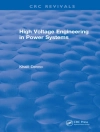PETROLEUM REFINING
The third volume of a multi-volume set of the most comprehensive and up-to-date coverage of the advances of petroleum refining designs and applications, written by one of the world’s most well-known process engineers, this is a must-have for any chemical, process, or petroleum engineer.
This volume continues the most up-to-date and comprehensive coverage of the most significant and recent changes to petroleum refining, presenting the state-of-the-art to the engineer, scientist, or student.
This book provides the design of process equipment, such as vessels for the separation of two-phase and three-phase fluids, using Excel spreadsheets, and extensive process safety investigations of refinery incidents, distillation, distillation sequencing, and dividing wall columns. It also covers multicomponent distillation, packed towers, liquid-liquid extraction using Uni Sim design software, and process safety incidents involving these equipment items and pertinent industrial case studies.
Useful as a textbook, this is also an excellent, handy go-to reference for the veteran engineer, a volume no chemical or process engineering library should be without. Written by one of the world’s foremost authorities, this book sets the standard for the industry and is an integral part of the petroleum refining renaissance. It is truly a must-have for any practicing engineer or student in this area.
This groundbreaking new volume:
- Assists engineers in rapidly analyzing problems and finding effective design methods and select mechanical specifications
- Provides improved design manuals to methods and proven fundamentals of process design with related data and charts
- Covers a complete range of basic day–to–day petroleum refining operations topics with new materials on significant industry changes
- Includes extensive Excel spreadsheets for the design of process vessels for mechanical separation of two-phase and three-phase fluids
- Provides Uni Sim ®-based case studies for enabling simulation of key processes outlined in the book
- Helps achieve optimum operations and process conditions and shows how to translate design fundamentals into mechanical equipment specifications
- Has a related website that includes computer applications along with spreadsheets and concise applied process design flow charts and process data sheets
- Provides various case studies of process safety incidents in refineries and means of mitigating these from investigations by the US Chemical Safety Board
- Includes a vast Glossary of Petroleum and Technical Terminology
Inhoudsopgave
Preface xxii
Acknowledgments xxiv
18 Mechanical Separations 1
18.1 Particle Size 1
18.2 Preliminary Separator Selection 6
18.3 Gravity Settlers 16
18.4 Terminal Velocity 19
18.5 Alternate Terminal Velocity Calculation 24
18.6 American Petroleum Institute’s Oil Field Separators 28
18.7 Liquid/Liquid, Liquid/Solid Gravity Separations, Decanters, and Sedimentation Equipment 28
18.8 Horizontal Gravity Settlers or Decanters, Liquid/Liquid 29
18.9 Modified Method of Happel and Jordan 33
18.10 Decanter 36
18.11 Impingement Separators 42
18.12 Centrifugal Separators 68
References 246
19 Distillation 249
19.1 Distillation Process Performance 249
19.2 Equilibrium Basic Considerations 252
19.3 Vapor–Liquid Equilibria 253
19.4 Activity Coefficients 262
19.5 Excess Gibbs Energy—GE 263
19.6 K-Value 264
19.7 Ideal Systems 266
19.8 Henry’s Law 268
19.9 K-Factor Hydrocarbon Equilibrium Charts 269
19.10 Non-Ideal Systems 277
19.11 Thermodynamic Simulation Software Programs 280
19.12 Vapor Pressure 283
19.13 Azeotropic Mixtures 296
19.14 Bubble Point of Liquid Mixture 311
19.15 Equilibrium Flash Computations 316
19.16 Degrees of Freedom 325
19.17 Uni Sim (Honeywell) Software 326
19.18 Binary System Material Balance: Constant Molal Overflow Tray to Tray 333
19.19 Determination of Distillation Operating Pressures 343
19.20 Condenser Types From a Distillation Column 344
19.21 Effect of Thermal Condition of Feed 348
19.22 Effect of Total Reflux, Minimum Number of Plates in a Distillation Column 352
19.23 Relative Volatility α Separating Factor in a Vapor–Liquid System 355
19.24 Rapid Estimation of Relative Volatility 366
19.25 Estimation of Relative Volatilities Under 1.25 (α < 125) by Ryan 367
19.26 Estimation of Minimum Reflux Ratio: Infinite Plates 368
19.27 Calculation of Number of Theoretical Trays at Actual Reflux 370
19.28 Identification of “Pinch Conditions” on an x-y Diagram at High Pressure 373
19.29 Distillation Column Design 376
19.30 Simulation of a Fractionating Column 378
19.31 Determination of Number of Theoretical Plates in Fractionating Columns by the Smoker Equations at Constant Relative Volatility (α = constant) 396
19.32 The Jafarey, Douglas, and Mc Avoy Equation: Design and Control 401
19.33 Number of Theoretical Trays at Actual Reflux 411
19.34 Estimating Tray Efficiency in a Distillation Column 413
19.35 Steam Distillation 422
19.36 Distillation with Heat Balance of Component Mixture 432
19.37 Multicomponent Distillation 453
19.38 Scheibel–Montross Empirical: Adjacent Key Systems: Constant or Variable Volatility 494
19.39 Minimum Number of Trays: Total Reflux−Constant Volatility 497
19.40 Smith–Brinkley (SB) Method 512
19.41 Retrofit Design of Distillation Columns 514
19.42 Tray-by-Tray for Multicomponent Mixtures 517
19.43 Tray-by-Tray Calculation of a Multicomponent Mixture Using a Digital Computer 531
19.44 Thermal Condition of Feed 532
19.45 Minimum Reflux-Underwood Method, Determination of αAvg for Multicomponent Mixture 533
19.46 Heat Balance-Adjacent Key Systems with Sharp Separations, Constant Molal Overflow 539
19.47 Stripping Volatile Organic Chemicals (VOC) from Water with Air 542
19.48 Rigorous Plate-to-Plate Calculation (Sorel Method) 547
19.49 Multiple Feeds and Side Streams for a Binary Mixture 551
19.50 Chou and Yaws Method 558
19.51 Optimum Reflux Ratio and Optimum Number of Trays Calculations 561
19.52 Tower Sizing for Valve Trays 574
19.53 Troubleshooting, Predictive Maintenance, and Controls for Distillation Columns 589
19.54 Distillation Sequencing with Columns Having More than Two Products 622
19.55 Heat Integration of Distillation Columns 630
19.56 Capital Cost Considerations for Distillation Columns 634
19.57 The Pinch Design Approach to Inventing a Network 644
19.58 Appropriate Placement and Integration of Distillation Columns 644
19.59 Heat Integration of Distillation Columns: Summary 645
19.60 Common Installation Errors in Distillation Columns 645
References 693
Bibliography 699
20 Packed Towers and Liquid–Liquid Extraction 703
20.1 Shell 707
20.2 Random Packing 708
20.3 Packing Supports 709
20.4 Liquid Distribution 734
20.5 Packing Installation 739
20.6 Contacting Efficiency, Expressed as Kga, HTU, HETP 755
20.7 Packing Size 756
20.8 Pressure Drop 757
20.9 Materials of Construction 759
20.10 Particle versus Compact Preformed Structured Packings 759
20.11 Minimum Liquid Wetting Rates 760
20.12 Loading Point Loading Region 761
20.13 Flooding Point 772
20.14 Foaming Liquid Systems 773
20.15 Surface Tension Effects 773
20.16 Packing Factors 773
20.17 Recommended Design Capacity and Pressure Drop 776
20.18 Pressure Drop Design Criteria and Guide: Random Packings Only 778
20.19 Effects of Physical Properties 781
20.20 Performance Comparisons 784
20.21 Capacity Basis for Design 784
20.22 Proprietary Random Packing Design Guides 796
20.23 Liquid Hold-Up 822
20.24 Packing Wetted Area 824
20.25 Effective Interfacial Area 826
20.26 Entrainment from Packing Surface 827
20.27 Structured Packing 830
20.28 Structured Packing: Technical Performance Features 849
20.29 New Generalized Pressure Drop Correlation Charts 855
20.30 Mass and Heat Transfer in Packed Tower 855
20.31 Number of Transfer Units, NOG, NOL 856
20.32 Gas and Liquid-Phase Coefficients, kG and kL 868
20.33 Height of a Transfer Unit, HOG, HOL, HTU 869
20.34 Distillation in Packed Towers 874
20.35 Liquid–Liquid Extraction 893
20.36 Process Parameters 908
20.37 Solvents Selection for the Extraction Unit 911
20.38 Phenol Extraction Process of Lubes 913
20.39 Furfural Extraction Process 914
20.40 Dispersed-Phase Droplet Size 916
20.41 Theory 920
20.42 Nernst’s Distribution Law 921
20.43 Tie Lines 921
20.44 Phase Diagrams 929
20.45 Countercurrent Extractors 931
20.46 Extraction Equipment 935
References 956
Glossary 961
Appendix D 1087
Appendix F 1163
About the Author 1179
Index 1181
Over de auteur
Kayode Coker Ph D, is Engineering Consultant for AKC Technology, an Honorary Research Fellow at the University of Wolverhampton, U.K., a former Engineering Coordinator at Saudi Aramco Shell Refinery Company and Chairman of the department of Chemical Engineering Technology at Jubail Industrial College, Saudi Arabia. He has been a chartered chemical engineer for more than 30 years. He is a Fellow of the Institution of Chemical Engineers, U.K. and a senior member of the American Institute of Chemical Engineers. He holds a B.Sc. honors degree in Chemical Engineering, a Master of Science degree in Process Analysis and Development and Ph.D. in Chemical Engineering, all from Aston University, Birmingham, U.K. and a Teacher’s Certificate in Education at the University of London, U.K. He has directed and conducted short courses extensively throughout the world and has been a lecturer at the university level. His articles have been published in several international journals. He is an author of five books in chemical engineering, a contributor to the Encyclopedia of Chemical Processing and Design. Vol 61. He was named as one of the International Biographical Centre’s Leading Engineers of the World for 2008. Also, he is a member of International Who’s Who of Professionals TM and Madison Who’s Who in the U.S.












